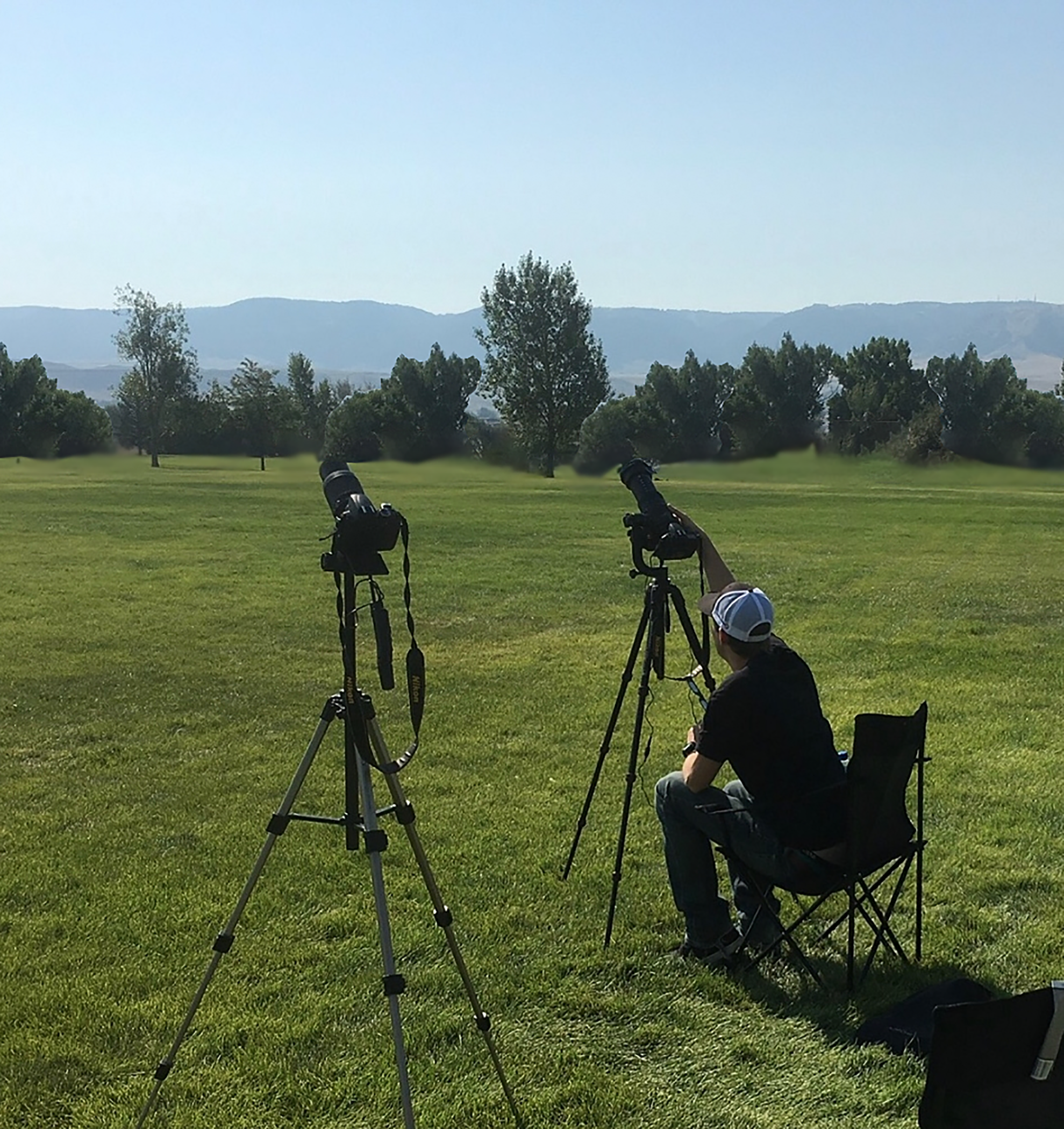In August 2017, the Sovaris Aerospace team trekked up to Casper, Wyoming to film the total solar eclipse. [Eclipse Photo Credit above: copyright © 2017 Caleb M. Schmidt, Michael A. Schmidt]
This event came to be known as the Great American Solar Eclipse, because it was the first to transit the contiguous United States and was the first total eclipse of the sun that was visible from the contiguous U.S. since 1979. Also, this rare celestial spectacle had a trajectory exclusive to the U.S. for the first time since the nation’s birth in 1776.
The Sovaris team used two cameras with variable zoom lenses. This included two Nikon D5000 cameras, one with a 50mm to 500mm zoom lens for closer images and the second with a 35mm to 60mm lens for wider images. Bracketing was set during Partial 1 and Partial 2 at 10 stops between 1/2000 and 1 sec, using a solar filter. The solar filter was a Marumi 95mm DHG ND-100000 Solid Neutral Density 5.0 Solar Eclipse filter (16.5 stops). During totality, bracketing was set at 10 stops between 1/1000 and 1 sec and no solar filter. ISO was set at 200 and f/5.6 throughout the eclipse.
For those who have never seen a solar eclipse in totality, it is one of the most memorable two minutes imaginable. Look for the next total eclipse in the US in 2024 and a more proximal eclipse in Argentina on December 14, 2020.
Caleb M. Schmidt of Sovaris Aerospace shown photographing the Great American Solar Eclipse August 21, 2017 above Casper, WY.


Leave A Comment